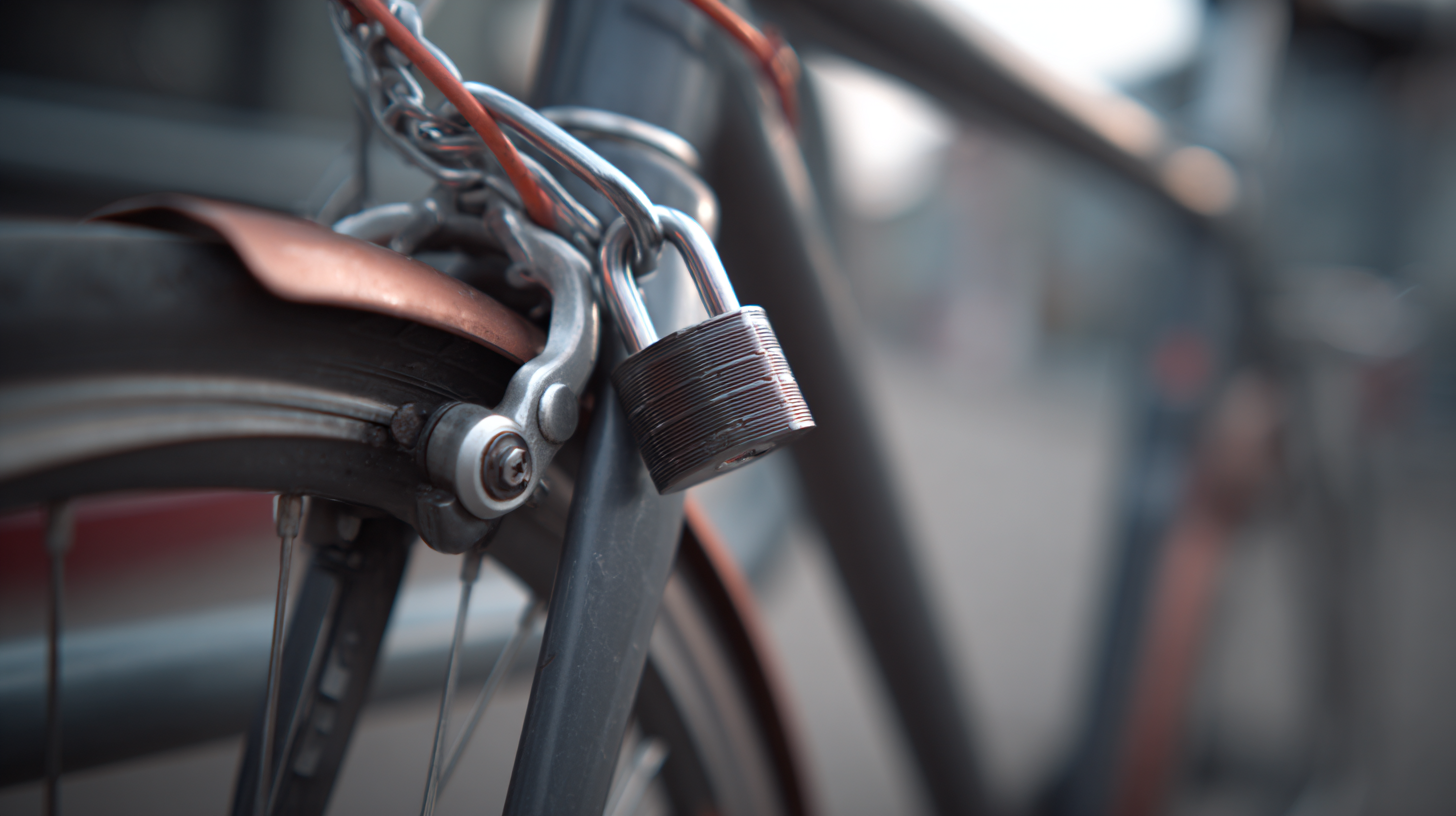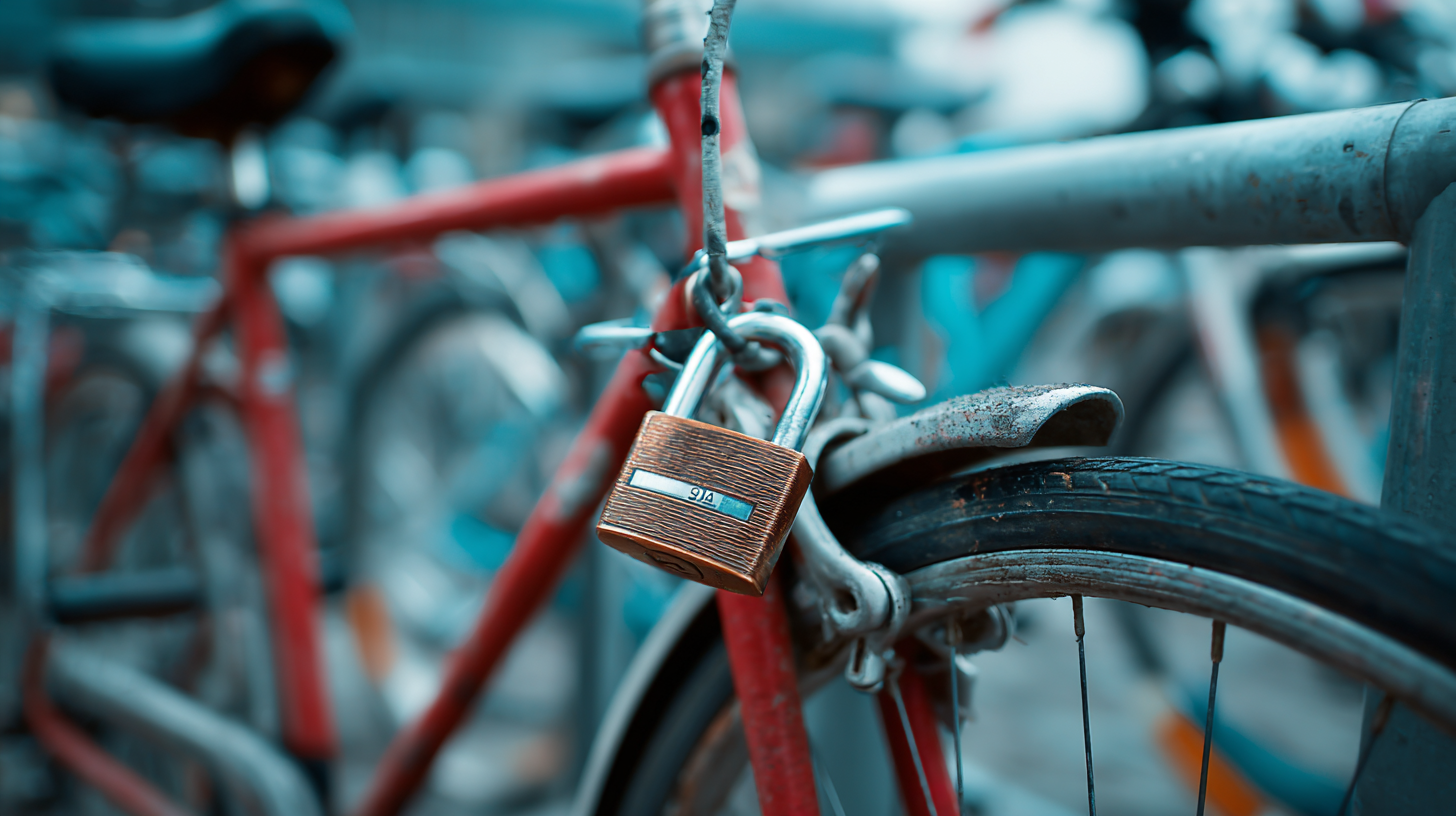-
Phone
-
E-mail
-
Whatsapp
-
WeChat

Leave Your Message

 Bicycle theft is a prevalent issue in urban areas, making it crucial for cyclists to understand the significance of effective security measures. One of the most vital tools in safeguarding bicycles is the cycle lock. A high-quality cycle lock not only acts as a deterrent against theft but also provides peace of mind for bike owners. In this article, we will explore the essential elements of choosing the right cycle lock, the various types available, and practical tips for ensuring maximum security. Whether you are a daily commuter or a recreational cyclist, understanding how to properly utilize a cycle lock can significantly reduce the risk of losing your bike to thieves. By adopting the right strategies and being aware of the potential vulnerabilities, you can enhance your bicycle's security and enjoy your rides without worry.
Bicycle theft is a prevalent issue in urban areas, making it crucial for cyclists to understand the significance of effective security measures. One of the most vital tools in safeguarding bicycles is the cycle lock. A high-quality cycle lock not only acts as a deterrent against theft but also provides peace of mind for bike owners. In this article, we will explore the essential elements of choosing the right cycle lock, the various types available, and practical tips for ensuring maximum security. Whether you are a daily commuter or a recreational cyclist, understanding how to properly utilize a cycle lock can significantly reduce the risk of losing your bike to thieves. By adopting the right strategies and being aware of the potential vulnerabilities, you can enhance your bicycle's security and enjoy your rides without worry.
Bicycle theft is becoming an alarming trend in urban areas, with theft rates rising significantly over the past few years. This increase can be attributed to various factors, including the growing popularity of cycling for commuting and leisure, which unfortunately attracts thieves. Many cyclists underestimate the risk of theft, often opting for minimal security measures, leaving their bikes vulnerable to opportunistic criminals. As cities become more bike-friendly, addressing the security of these vehicles needs urgent attention to protect the investments made by cyclists.
Enhanced security measures are essential in combating the rising trend of bicycle theft. Cyclists must invest in high-quality cycle locks that not only deter potential thieves but also provide peace of mind. Additionally, employing multifaceted security strategies, such as locking bikes in well-lit areas or using GPS tracking devices, can further reduce the likelihood of theft. Public awareness campaigns highlighting the importance of bicycle security and promoting these strategies could foster a culture of vigilance among cyclists, ultimately making communities less favorable for thieves.
Cycle locks are an essential component of bicycle security, providing varying levels of protection against theft. There are several types of cycle locks, each with unique features that impact their effectiveness. U-locks, for instance, are renowned for their sturdiness and resistance to cutting, making them a popular choice among cyclists. Chain locks offer flexibility in securing a bike but can be more vulnerable to plasma cutters or heavy-duty bolt cutters. Folding locks, while lightweight and portable, may not provide the same level of security as their bulkier counterparts.
In addition to the type of lock, the features can play a significant role in preventing theft. Locks with hardened steel construction and anti-drill plates are more difficult for thieves to break into. Furthermore, locks with an integrated alarm system can deter potential thieves by emitting a loud sound when tampered with. It's also important to secure the bike correctly by locking both the frame and the wheels to an immovable object, thereby minimizing the risk of theft. Understanding these elements can greatly enhance a cyclist's ability to protect their investment.
This chart illustrates the effectiveness ratings of various types of cycle locks in preventing bicycle theft, with U-Locks being the most effective and cable locks the least effective according to user evaluations.
When it comes to preventing bicycle theft, understanding the importance of cycle lock security cannot be overstated. According to a report from the National Bicycle Dealers Association, around 1.5 million bicycles are stolen in the U.S. each year, which highlights the urgency for cyclists to take proactive measures in securing their bikes. Utilizing high-quality locks is one of the most effective strategies in safeguarding your bicycle. However, not all locks offer the same level of security, so it's crucial to make informed choices.
**Tip**: Invest in a U-lock or a heavy-duty chain lock, both of which provide superior resistance against cutting and picking. A study by the University of New Hampshire found that U-locks are 60% less likely to be broken compared to lighter cable locks. Always lock your bicycle in high-traffic areas, as thieves tend to avoid locations with more potential witnesses.
Additionally, proper locking techniques can make a significant difference. Ensure that both the frame and wheel are locked to a solid, immovable object, leaving minimal space for tools. **Tip**: When using a U-lock, position the keyhole facing downward to prevent dirt accumulation and make it challenging for thieves to access the lock mechanism. Emphasizing these best practices can drastically reduce the chances of bike theft and provide peace of mind for cyclists.
| Lock Type | Security Rating | Weight | Price Range | Best Practice |
|---|---|---|---|---|
| U-Lock | High | 2.0 lbs | $50 - $150 | Lock frame and wheels to immovable object |
| Chain Lock | Medium | 4.0 lbs | $30 - $100 | Chain lock around frame and both wheels |
| Folding Lock | Medium | 3.5 lbs | $40 - $120 | Secure to bike rack or secured structure |
| Cable Lock | Low | 1.5 lbs | $10 - $40 | Use only for temporary stops |
| Smart Lock | Medium to High | 2.5 lbs | $100 - $300 | Monitor bike status via app |
Using a proper cycle lock is essential in deterring potential bicycle theft, a concern that has seen increasing relevance in urban environments. According to a report from the National Bicycle Dealers Association, nearly 1.5 million bicycles are stolen in the U.S. each year, highlighting the necessity for effective security measures. Proper lock usage not only protects your investment but also creates visible deterrence, signaling to thieves that stealing a bike will be more challenging.

When securing a bicycle, using high-quality locks, such as U-locks or heavy-duty chain locks, can significantly reduce theft risks. A study by the London Cycling Campaign found that bicycles secured with U-locks were 80% less likely to be stolen than those using cable locks. Additionally, locking both the frame and the wheels to a sturdy, immovable object is crucial. This method not only increases visible security but also makes it more difficult for thieves to quickly make off with a bike. Adopting these locking techniques can change the odds and help foster a safer cycling community.
Smart locks and tracking solutions are revolutionizing bicycle security and addressing the growing concern of bicycle theft. Traditional locks often fall short in deterring thieves, but the integration of technology into locking mechanisms represents a significant advance. Smart locks utilize Bluetooth technology and smartphone apps to provide enhanced security features such as remote locking, unlocking, and alerts for unauthorized access attempts. This real-time monitoring empowers cyclists with greater control over their bicycles, making it much more difficult for thieves to succeed.
In addition to smart locks, tracking solutions are becoming increasingly essential in bicycle security. GPS tracking devices can be discreetly attached to bicycles, allowing owners to monitor their bikes' locations at all times. In the unfortunate event of a theft, these tracking systems can aid law enforcement in quickly recovering the stolen bicycles. By integrating these technological innovations, cyclists can significantly lower their risk of losing their bikes, ensuring a safer and more enjoyable cycling experience.

